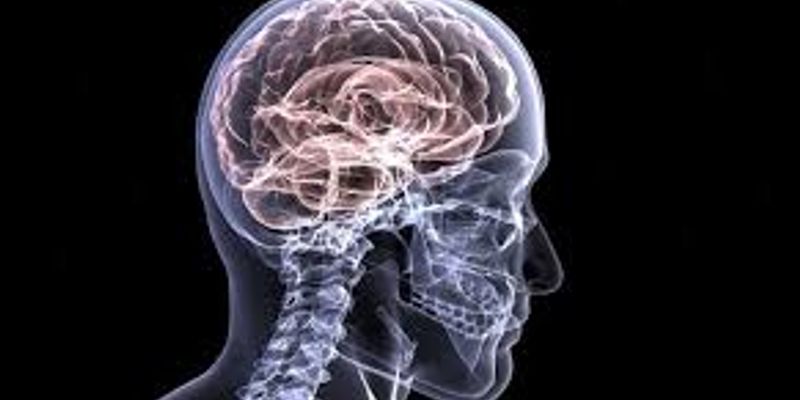Medical Imaging
Medical imaging: is the process of creating visual representations of the interior of the body for medical intervention and clinical analysis. Medical imaging is a visual representation of the function of some organs and tissues.
-
MAR 20, 2014 | 11:00 AMAlzheimers disease (AD) is a neurodegenerative disorder producing cognitive impairment and dementia in millions of elders. Currently no treatment is effective to slow the progression of AD. M...MAR 20, 2014 | 10:00 AMNeuroimaging plays a large role in our pursuit of the understanding of behavior and cognition in health and disease. The past decade has seen the emergence of a wealth of resources that suppo...MAR 20, 2014 | 9:00 AMThe Brain Research through Advancing Innovative Neurotechnologies (BRAIN) Initiative is part of a new Presidential focus aimed at revolutionizing our understanding of the human brain. By acce...Speaker: Story Landis, PhD, Thomas R. Insel, MD, Justin Sanchez, PhD, John C. WingfieldPresented at: Neuroscience Virtual Event Series 2014
MAR 20, 2014 | 8:00 AMLate onset dementia is usually a multi-factorial disease wherein cumulative pathological brain insults (of more than one pathology) results in progressive cognitive decline which ultimately l...MAR 20, 2014 | 7:00 AMHuntington's disease (HD) is a progressive, inherited, degenerative brain disorder that produces physical, mental and emotional changes. Named for George Huntington, the physician who fi...MAR 19, 2014 | 1:00 PMThe Willerth lab investigates how to engineer neural tissue by combining pluripotent stem cells, controlled drug delivery and biomaterial scaffolds. When generating these replacement tissues,...MAR 19, 2014 | 10:00 AMWe present a personalized medicine suite of software applications developed at UCSF for multiple sclerosis (MS): the MS Bioscreen. This new tool addresses the challenges of the dynamic manage...MAR 19, 2014 | 9:00 AMDendritic spine shape enables sequestering of subcellular components needed for synaptic plasticity, including polyribosomes for local protein synthesis, smooth endoplasmic reticulum (SER) to...MAR 19, 2014 | 9:00 AMMultiple Sclerosis is a debilitating neurodegnerative disease of the central nervous system in which the immune system targets and destroys myelin sheaths surrounding axons. Progressive a...MAR 19, 2014 | 8:00 AMThe Brain Research through Advancing Innovative Neurotechnologies (BRAIN) Initiative is part of a new Presidential focus aimed at revolutionizing our understanding of the human brain. By...Speaker: Emery N. Brown, MD, PhD, William Newsome, PhD, Justin Sanchez, PhD, Terrence J Sejnowski, PhDPresented at: Neuroscience Virtual Event Series 2014
MAR 19, 2014 | 7:00 AMMultiple Sclerosis (MS) is an autoimmune disease that leads to widespread pathology within the central nervous system (CNS) and is the most common cause of neurologic disability among young a...MAR 19, 2014 | 7:00 AMDown syndrome (DS) is a complex multi-system disorder affecting more than 5.8 million individuals around the world and it causes significant physical, psychological, and cognitive abnormaliti...The rise of zebrafish as a research model has been dramatic. Given the global nature of the work, the rise in shipping zebrafish as a laboratory species has been sharp. Up until this point th...
The proper surgical techniques represent a key opportunity to improve the welfare of laboratory rodents, while meeting legal and ethical obligations. Use of inappropriate or poor surgical tec...
Speaker:
Szczepan Baran, VMD, MS
Presented at: Laboratory Animal Sciences Virtual Event Series 2014
I will present the most common hazards, as they are perceived by workers (traditionally zoonoses, bites and scratches, allergies).Then I will present real data on accidents in research faci...
Speaker:
Jesus Martinez-Palacio, MS
Presented at: Laboratory Animal Sciences Virtual Event Series 2014
As the prevalence of the use of Zebrafish as an animal model continues its ballistic growth, the need for a better understanding of the factors that add up to success is needed. Topics cover...
Regulations and guidelines governing the use of animals in research require minimization of pain and distress. However, pharmacologic treatments to prevent or alleviate pain can interfere wit...
Speaker:
Jennifer Lofgren, DVM, MS, DACLAM
Presented at: Laboratory Animal Sciences Virtual Event Series 2014
Monitoring the health of laboratory rodents is an important tool for improving the quality of animals used in research. However not all animal facilities have the same requirements, and an ex...
Speaker:
Jenny Kingham, BVSc, MACVSc ( Lab Anim)
Presented at: Laboratory Animal Sciences Virtual Event Series 2014
Nonhuman primates in captivity are typically provided with a multitude of behavioral management opportunities, including naturalistic social groupings, foraging devices, complex physical envi...
All personnel involved in an animal care and use program are expected to have an appropriate level of education, training and/or qualifications to perform their duties as defined through laws...
Speaker:
John N Norton, D.V.M., PhD, Dipl, ABT, ACLAM
Presented at: Laboratory Animal Sciences Virtual Event Series 2014
























